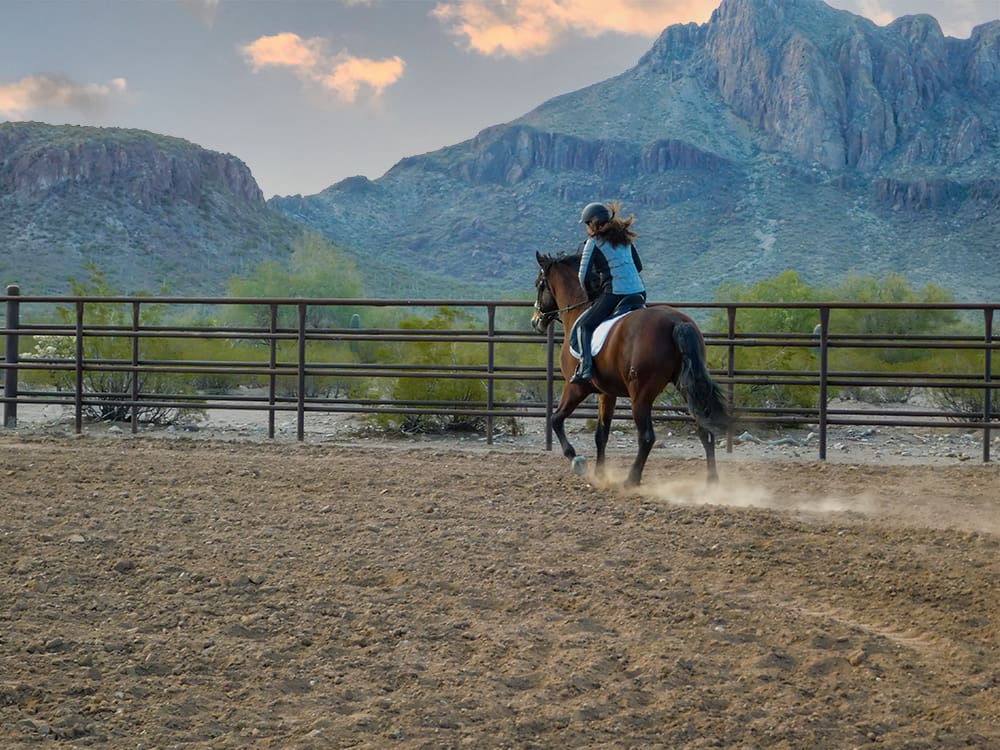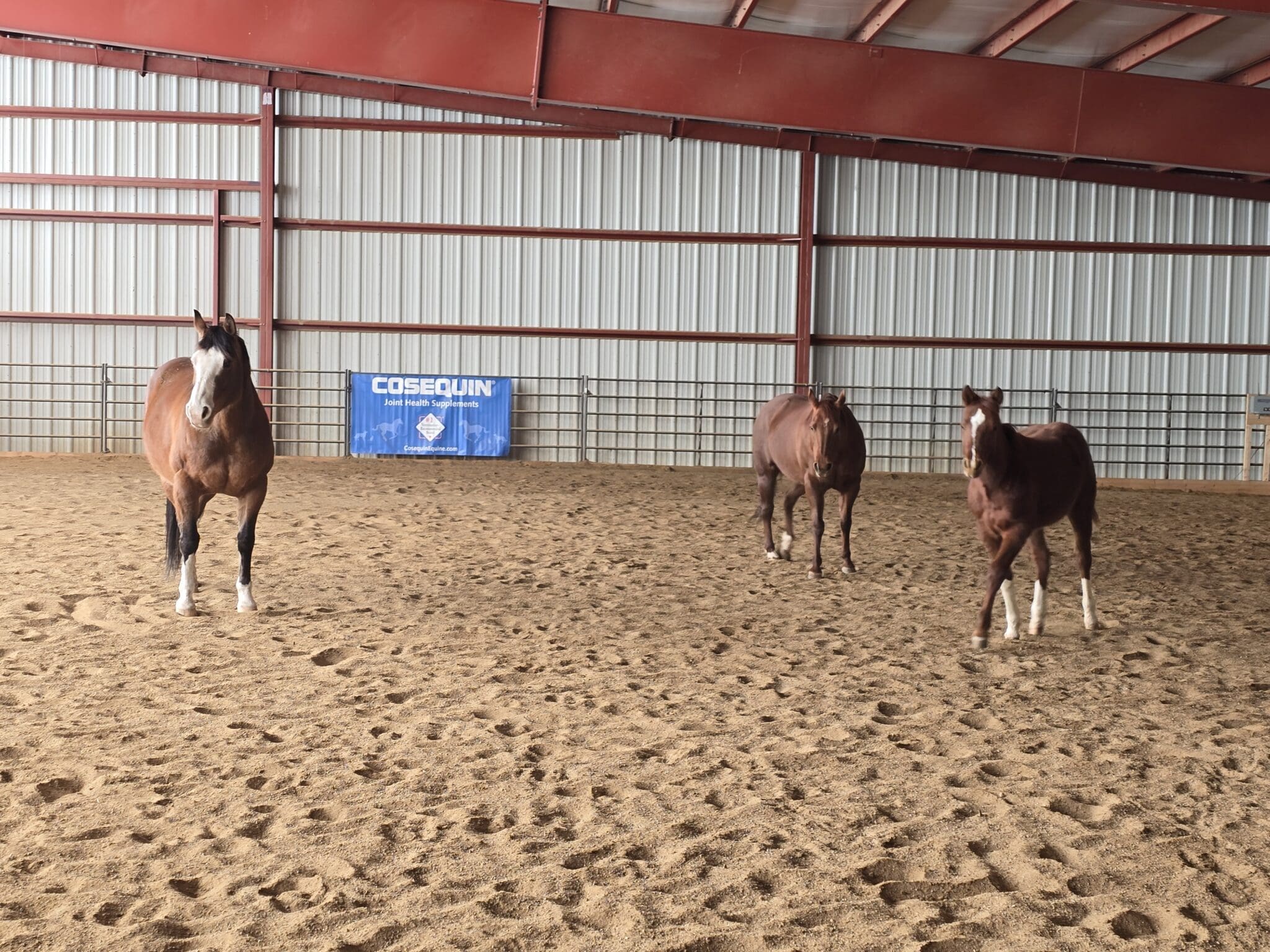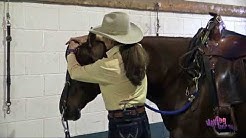
Whether your young horse is ready for saddle training, or your adult horse needs to be restarted, has developed undesirable behaviors, or is ready for a higher level of training, there may come a time when you consider sending them to a professional trainer.
There’s a huge investment in time and money when a horse is professionally trained—it’s why well-trained horses are so expensive. For the most part, you can buy a well-trained horse faster and cheaper than you can develop one, but anyone who’s been shopping for horses in the past couple of years knows how daunting it can be to find the right horse, even if you have a fat budget and unlimited time. For many reasons, investing in professional training might be a good course of action for your horse and you.
There are more questions than answers when it comes to decisions about professional horse training. After training horses for nearly 50 years, my point of view is from the horse trainer’s perspective, but there are some questions I get from my students and folks on social media repeatedly that help me understand the horse owner’s point of view too.
“How long does it take to train a horse?”
“How should I expect the horse to progress?”
“What does my horse need to know, and why would a trainer help?”
There are many types of trainers, although finding a good trainer can be challenging, and there is no shortage of horses that need training. Every circumstance is different, and I can’t begin to tell you what you should do, but I can give you some food for thought about what to consider when it comes to your needs, what kind of training your horse needs, and what reasonable expectations to have.
Quality Vs. Quantity
I’m frequently asked by horse owners training their own horses, “How long should my training session last?” It’s a reasonable question to ask, but there’s not a cut-and-dry answer to that because it depends on each individual situation.
Often with horse training we like to say that less is more, slower is better—and I believe it to be true. We also know that it’s imperative to end every training session on a good note, because the horse will come back to the next training session in the same state of mind you ended with.
An experienced trainer should know when they’ve achieved a big change in a horse or an optimal result, and can accomplish far more in a shorter amount of time. Horses are lightning-fast learners, so if it’s taking a long time to teach a horse something, it’s probably not the horse that’s at fault. A longer training session each day does not make up for the mistakes of the handler.
Placing a horse with a professional trainer generally results in the horse being trained every day, and pushed at a rate that shows progress to the horse owner. If you choose the right trainer, you will be paying for both quantity AND quality.
Along with the consistent daily handling, when you put a horse with a professional trainer, you hope to capitalize on the trainer’s knowledge and experience. The more horses you’ve trained, the more mistakes you’ve made. As a result, the more you’ve learned, the fewer mistakes you’ll make in the future.
In my video on starting young horses under-saddle, I pay special attention to the critical mistakes that are easily made—in the hopes they can be avoided by less experienced trainers. A successful horse trainer has a lot of horses under their belt, and hopefully trains with fewer mistakes than an amateur trainer would.

Want a Saddle Fast, at the BEST Price?
Balanced Ride • Narrow Twist • Comfort for Horse & Rider
Ready to Ship Today! (719) 530-0531
The Basics: What Green Horses Need to Learn
In a perfect world, horses begin their training as mature juveniles—not too early, not too late—but some horses will miss the opportunity to be educated until later in life. While younger horses are more impressionable and curious than an older horse, all horses need safe handling skills and pleasant ground manners. Fundamental skills like lead line manners, patience while tied, feet handling, and standing for the farrier are imperative.
No matter what career path the horse will ultimately be on, basic training under-saddle is the same for all disciplines of riding. Discipline-specific training comes later. In other words, if I had a young sport horse with a ton of potential as a jumper, I wouldn’t hesitate to send it to a Western trainer who specialized in colt-starting—knowing that the foundational layer I need the talented young horse to have is the same for all disciplines.
Here’s what I would expect a horse in basic training to learn:
- Lead properly, stand quietly tied, have good manners for vet and farrier
- Become desensitized to saddling/bridling, carrying the weight of the rider
- Learn cues to go-stop-turn, all 3 gaits
- Learn basic obedience: rider controls direction and speed
- Develop a strong work ethic and willing attitude
- Trailer load, ride in the trailer quietly, unload smoothly
- Experience performing skills in various venues
How long it takes for a horse to graduate from basic training depends on many variables, not the least of which are the temperament and talents of the horse, and the skill of the trainer.
How Much Time Does It Take?
Trainers dread horse owners that come in search of the “30-Day Wonder,” with the hopes that their small investment will return a perfectly trained horse, fixing issues often created by the owner. I learned very early on as a horse trainer to shy away from horses that were already started by someone who has tried to start the horse themselves. If someone tries to start a horse under-saddle themselves, then consults a trainer, you can safely bet something went wrong. Training horses is easy, but untraining is very hard (more about that later).
Trainers relish the clients who are willing to invest in their horse’s education over the long term, let’s say 90-120 days at a time, returning each year to advance the horse’s education. It’s a lot of money to sink into a horse’s development, but the returns can be huge—both financially and emotionally.
Horses are very fast learners, and with expert handling and steady work, they can reach a high level of training in 6 months. However, learning new skills is just one step in a horse’s training. They also need “seasoning,” which is the culmination of life experiences (traveling to and working in new locations, experiencing unknown horses, sleeping in strange barns, etc.). So even though horses can acquire new skills rapidly, and quickly become fluent in those skills, generalizing their performance to a variety of different situations and locations may take years. (Read my article, Slower is Faster with Horses, to get more in-depth information on the horse’s stages of learning.)
Obviously, there are many variables that impact how quickly a horse’s training progresses. Horses are lightning-quick learners, but the age of the horse, its temperament (reactiveness, fear level), the skill of the trainer, and previous experiences (good, bad, or none), can all have an impact.
Let’s say we are starting with a 3-year-old Quarter Horse that is halter-trained but has had limited handling other than routine health maintenance. It’s been allowed to grow up frolicking with the herd and just be a horse. To me, this would be the ideal for starting under-saddle. Assuming the horse goes to a qualified and experienced trainer, here’s the progress I would reasonably expect to see:
After 30 days of training: Horse is well-settled into a work routine that includes standing tied, grooming, bathing, being saddled, bridled and ridden at all three gaits, but is still VERY green, might be squirrelly, and may still require manual steering and stopping.
After 60 days of training: Horse is getting steadier in direction and speed control and expanding its comfort zone to ride out of the arena, alone, and in company. Starting to develop power steering and power brakes, and more body control. Starting to see physical changes in fitness.
After 90 days of training: Horse is becoming soft and responsive, with a greatly expanded comfort zone (riding off site, being ridden by other riders). Starting to learn more advanced maneuvers, higher level body control, introduction to discipline specific skills, but the trainer is probably making the horse look more advanced than it actually is.
After 120 days of training: Horse is starting to show its finish-level potential, although still far from finished. Talents are emerging, advanced skills are accumulating, but the horse is still lacking experience and coordination. Horse is very responsive to the trainer’s cues and its physical appearance shows a high level of conditioning. It may be time to start introducing the horse to the competition environment, by hauling to a few shows without competing, because it could be ready for the first show in a few months.
Remember, these are gross generalizations of expected progress over time and individual horses can vary greatly one way or the other. Mistakes and setbacks happen, some horses have crazy talent, others need time to develop. Horses learn skills fast, but seasoning (the ability to perform those skills fluently in any environment), takes years.
People often ask me how much time you should spend in a training session each day? That depends a lot on the age of the horse and the effectiveness of the trainer. Young horses, under the age of 3 years old, have shorter attention spans and their tender minds can dull quickly. The younger the horse, the shorter the attention span. Also, an expert trainer can achieve a lot more with a horse in a lot shorter session than a trainer of lesser skill.

Be the Leader of Your Herd
As your horsemanship improves, so does your horse!
Untrained or Knows Too Much?
If you are hiring a horse trainer because you have a mature and trained riding
horse that has developed undesirable behaviors like spooking, bolting, refusing,
bucking, or rearing, there are no magic bullets or quick fixes. It’s more likely
than not to be a problem that stems from an underlying pain issue, so your first
stop is an equine clinic for a medical exam and lameness evaluation.
Many, if not most, training issues with mature riding horses begin with pain or
fright. The good news is that with today’s accelerating advances in equine
sports medicine, there are many curative treatments that offer stunning results.
Ruling out physical problems always comes first when there are training
“problems” and most trainers that take horses for remedial training know this,
and will require veterinary clearance before training begins.
While a training problem can start with a physical issue, it can easily result
in a learned response. Horses learn by associating one thing with another. Let’s
say a well-trained show jumper develops pain in his hock on take-off and refuses
to jump in competition. After three attempts, the rider is eliminated and
excused from the arena. The horse was injured, which was the cause of its
refusals, but it might associate the refusals with getting to leave the arena.
Well after the injuries are healed, the horse may decide to test that theory
again.
This uncanny ability of the horse to make unwanted associations can easily
happen without any pain issues too. Let’s say the rider asks a horse to canter
and accidentally bounces on its back, startling the horse when it takes off into
the canter. The horse’s instinctive response would be to crow hop or throw a
little buck. If the rider immediately stopped the horse when it bucked, the
horse may associate bucking (which he did innocently at first, as a result of
the rider’s mistake) with stopping and not having to canter again. What started
as an innocent and instinctive response to a startle, became a learned response
to buck when asked to canter.
Once physical issues are cleared up, there are two essential considerations to
think about when you are dealing with a trained horse that has developed
undesirable behavior. First, a horse cannot unlearn. Second, learned behavior
that is undesirable, is usually related to mistakes of the rider or handler.
Therefore, fixing the horse is only half the equation. People must be fixed too,
or the whole pattern re-occurs. One example comes to mind, and sadly, I’ve seen
it a few times in my career.
The one thing we wish horses would never learn, is that they outweigh us by as
much as ten times and could easily over-power us and leave whenever they want.
Thankfully, 99.9% of horses never learn these tactics, but if a horse learns to
use its body weight against you to get away from you, it’s a big problem. It’s
not uncommon for a horse being handled from the ground to spook and get away
from its handler. But if the horse is ripping and running away in response to
something the handler is asking, it can easily learn how to overpower you and
get away. With incompetent handling and repeated occurrences of getting away,
the horse learns tactics and learns to recognize opportunities.
In a case like this, the horse has developed tactics and learned to recognize
the situations and the type of people that will grant it opportunity. This
awareness and these tactics cannot be unlearned. A very competent trainer can
usually reprogram that horse and dissuade it from such behavior, employing
techniques to help safely manage a horse like this, but the horse will forever
know that in some situations and with some people, it can rip and run.
Finding the Right Trainer for Your Horse
A horse’s training needs may range from basic handling and under-saddle
training, to finish or competition-level skills, to remedial schooling for
horses that have developed unsafe or undesirable behaviors. Finding the right
trainer for you and your horse is a big subject and one I will talk about
extensively in the next episode of my podcast, Ride-On with Julie Goodnight.
Great horse trainers are not a dime a dozen and those of you who already have
one, should make them cookies and polish their boots. If you’re looking for help
from a horse trainer, it’s important that you understand why you need one, know
what you hope to accomplish, and what is realistic to expect from your
investment, before you start looking for the right match.
I’ll warn you, the hunt for the right trainer will not be easy or cheap. There’s
a lot to consider, so in the latest episode of my podcast, Ride On with Julie Goodnight,
I got deep in the weeds on this subject! Listen to this episode, called Does
Your Horse Need Professional Help? (Finding the Right Horse Trainer) at JulieGoodnight.com/podcast or find
it on your favorite podcast app.



